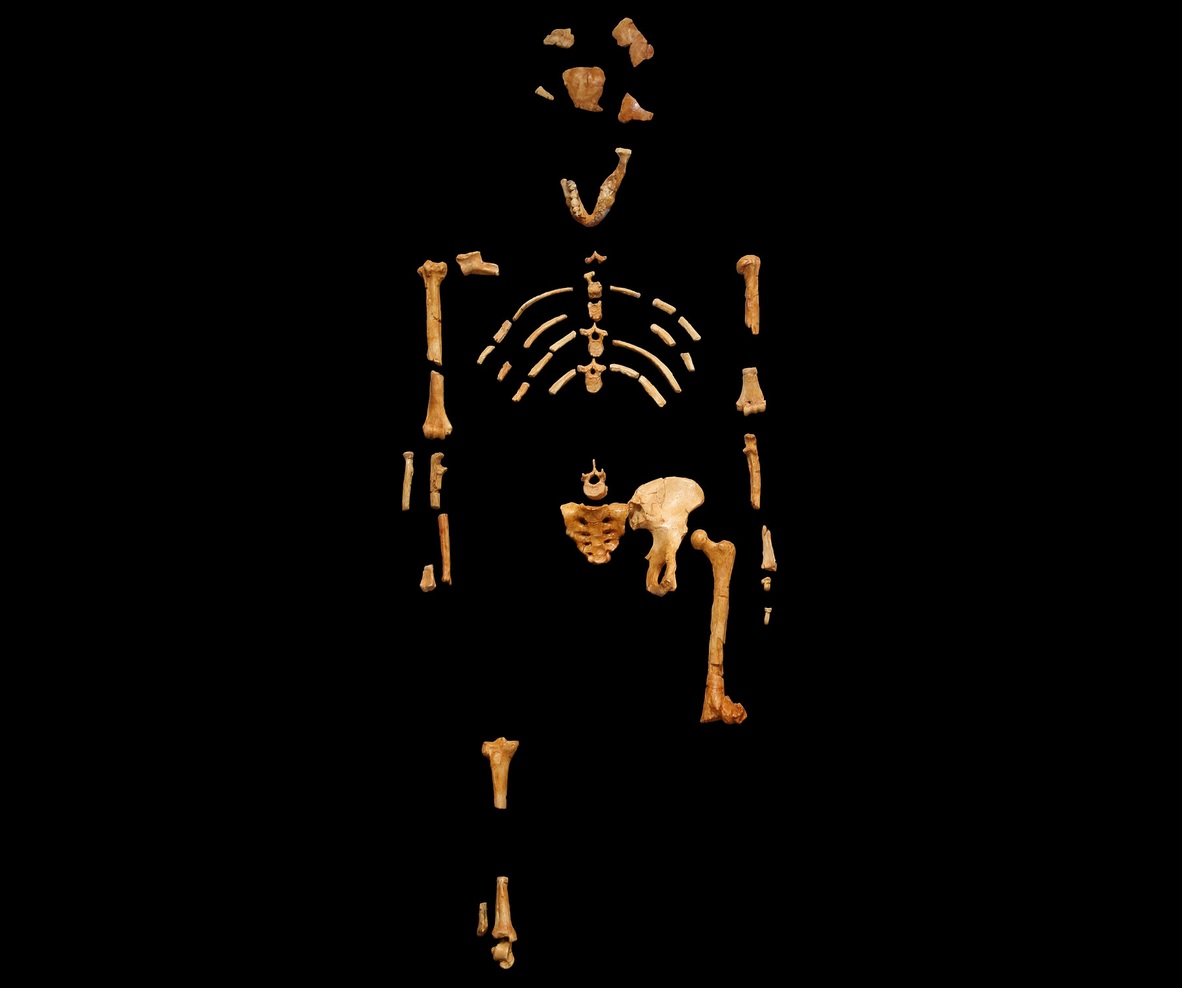 SAN FRANCISCO – A team of scientists has announced that the famous “Lucy” skeleton, a specimen long heralded as proof of man’s evolutionary descent, likely includes at least one bone from a baboon.
SAN FRANCISCO – A team of scientists has announced that the famous “Lucy” skeleton, a specimen long heralded as proof of man’s evolutionary descent, likely includes at least one bone from a baboon.
Ever since its discovery in Ethiopia in 1974, the partial skeleton nicknamed “Lucy” has been touted by evolutionists as proof that humans evolved from ape-like ancestors. Eager to show evidence for Darwin’s theory, evolutionists claim that Lucy was a Hominid—an ape-like primate that possessed the ability to walk upright, like modern humans.
Today, natural history museums frequently depict Lucy as a part ape, part human creature, with long arms, an erect posture, and a small brain. Evolutionists maintain that the skeleton, which is claimed to be 3.2 million years old, fills in crucial gaps in the human family tree.
However, many scientists, including those who believe in biblical creation, have long expressed skepticism toward the Lucy fossil. Sculptor and exhibit designer Doug Henderson wrote in a 2013 article for Answers in Genesis that depictions of Lucy are significantly influenced by biases and unfounded assumptions.
“Even though Lucy is fairly complete for a mammal fossil (47 of 207 bones found), the bones are mostly small fragments with many pieces missing,” Henderson wrote. “Other specimens have been found, but they are far more fragmentary. No matter how complete, all fossils must be interpreted. Some interpretation is always left to the imagination of the person doing the reconstruction.”
Last week, scientists announced that the famous skeleton includes at least one bone that likely came from a baboon. According to New Scientist, Gary Sawyer and Mike Smith at the American Museum of Natural History in New York, along with New York University’s Scott Williams, came to this conclusion after they analyzed the Lucy specimen and “noticed something odd.”
“Mike pointed out that one of the [vertebra] fragments, which no one, including me, had really paid close attention to, looked fairly small to fit with the rest of Lucy’s vertebral column,” Williams said.
The bone fragment’s size did not match up with the other pieces of the skeleton, the scientists concluded.
“It was just too small,” Williams said.
Williams then compared the bone fragment to the anatomies of other animals, noticing that it closely resembled baboon vertebrae.
“Baboons were a close match, both in shape and size,” Williams explained. “So we think we’ve solved this mystery. It seems that a fossil gelada baboon thoracic vertebra washed or was otherwise transported in the mix of Lucy’s remains.”
The researchers shared their findings at a meeting of the Paleoanthropology Society in San Francisco last week. Though evolutionists are downplaying the discovery as a minor mistake, others say these recent findings undermine the evolutionary dogma.
If the Lucy fragment is indeed from a baboon, the incident would not be the first time evolutionists have misidentified fossils that allegedly prove the existence of ape-men. In the 1920s, a single fossil purportedly originating from a primate nicknamed “Nebraska Man” was described by Science Magazine as “convincing evidence” of human evolution. However, the specimen was later shown to be nothing more than a wild pig tooth.
Dr. David Menton, a former professor emeritus of anatomy at Washington University School of Medicine, believes that evolutionists’ attempts to fill “the unbridgeable gap” between apes and men are futile.
“While Bible-believing Christians begin with the assumption that God’s word is true and that man’s ancestry goes back only to a fully human Adam and Eve, evolutionists begin with the assumption that man has, in fact, evolved from apes,” Menton wrote in an article for Answers in Genesis. “No paleoanthropologists (those who study the fossil evidence for man’s origin) would dare to seriously raise the question, ‘Did man evolve from apes?’ The only permissible question is, ‘From which apes did man evolve?’”
“No, we are not descended from apes,” Menton concluded. “Rather, God created man as the crown of His creation on Day 6. We are a special creation of God, made in His image, to bring Him glory. What a revolution this truth would make if our evolutionized culture truly understood it!”
Become a Christian News Network Supporter...


